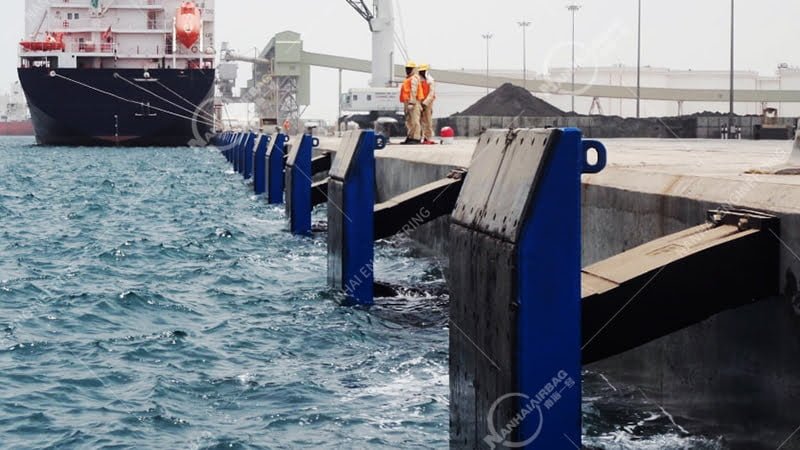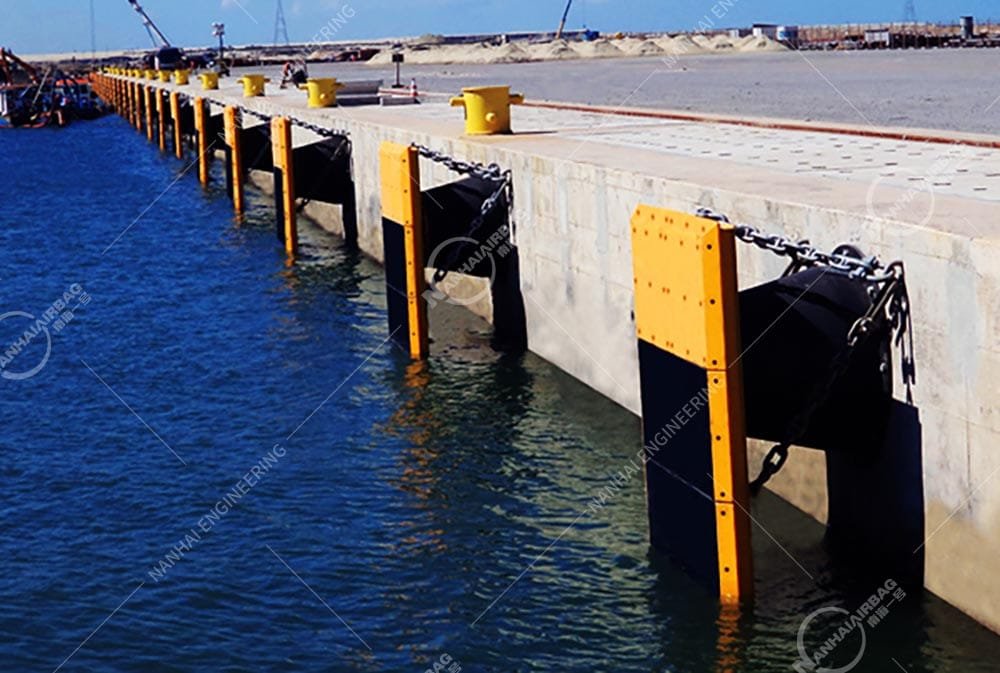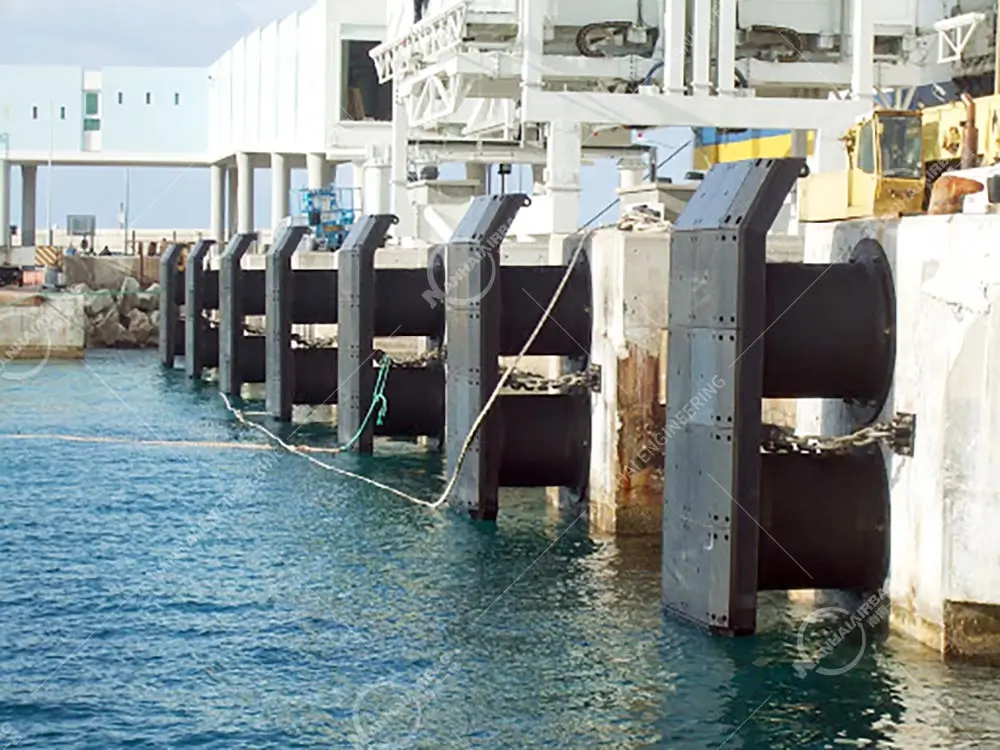Conseils pour le choix des défenses marines
07/10/2025Pourquoi les terminaux de croisière préfèrent-ils les défenses en mousse? ?
07/10/2025Element vs Cone vs Cell Fender : Quelle est la différence ?
Choisir le bon ailes en caoutchouc, défenses marineset défenses de navire est plus urgente que beaucoup ne le pensent. Les ports soumis à de fortes variations de marée, à des accostages en angle ou à des espaces restreints peuvent subir des dommages coûteux si les défenses ne sont pas correctement adaptées aux conditions d'accostage. Je l'ai vu de mes propres yeux : un porte-conteneurs frôlant un quai sans le type de défenses approprié peut entraîner des retards, des poursuites judiciaires et des centaines de milliers de dollars de factures de réparation. Comprendre les différences entre élément, côneet cellule Les ailes peuvent sauver votre port - ou votre santé mentale.
Pourquoi c'est important aujourd'hui
Qu'il s'agisse de moderniser l'infrastructure ou de gérer la sécurité de la flotte, le choix de la bonne défense marine a un impact sur la longévité, le coût et la performance. Par exemple, une défense cellulaire peut être idéale pour les terminaux de vrac lourd, mais si l'espace est restreint, une défense à éléments peut offrir une protection similaire dans un encombrement plus réduit. Lisez la suite pour savoir quelle solution correspond à votre profil d'accostage et vous permet d'éviter les dommages et les temps d'arrêt.
Extraits en vedette
Qu'est-ce qu'un Elément Fender?
Une défense à éléments est une défense en caoutchouc compacte et modulaire composée de "jambes en caoutchouc" embouties qui absorbent l'énergie par déformation. Elle offre une faible force de réaction, une grande souplesse d'installation (horizontale ou verticale) et fonctionne bien dans les espaces restreints.

Qu'est-ce qu'un Cône Fender?
Une défense conique présente une forme effilée et conique qui offre une grande absorption d'énergie et une faible force de réaction, en particulier en cas d'accostage angulaire. Elles conviennent mieux aux quais soumis à de fortes marées et aux navires lourds.

Qu'est-ce qu'un Cellule de défense?
Une aile de cellule est une unité cylindrique creuse en caoutchouc connue pour sa durabilité exceptionnelle et son absorption d'énergie élevée avec une force de réaction minimale, largement utilisée dans les terminaux à conteneurs et les terminaux pétroliers.

Comparaison côte à côte : Élément vs Cône vs Cellule
| Type de garde-boue | Former et construire | Principaux points forts | Cas d'utilisation idéaux |
|---|---|---|---|
| Élément | Conception modulaire "à pattes", compacte | Idéal dans les espaces restreints, faible rebond, montage flexible | Petits quais, postes d'amarrage pour remorqueurs, projets de modernisation |
| Cône | Cône aigu conique avec une grande largeur de tampon et de base | Grande absorption d'énergie ; stable aux angles et aux marées | Ports à marée haute, navires porte-conteneurs, postes d'amarrage en angle |
| Cellule | Coquille cylindrique avec centre creux | Très grande durabilité ; répartition uniforme de la charge | Ports commerciaux lourds - pétrole, vrac, terminaux GNL |
FAQ
Q : De quoi sont faites les ailes en caoutchouc ?
Les défenses en caoutchouc - qu'il s'agisse de cellules, de cônes ou d'éléments - sont moulées par compression ou extrudées à partir de caoutchouc naturel ou synthétique, spécialement formulé pour résister aux UV, à l'ozone et à l'eau de mer.
Q : Puis-je monter les ailes des éléments à la verticale ?
Oui ! Les défenses Element sont conçues pour un montage horizontal ou vertical - elles sont parfaites pour les piliers ou les colonnes où l'espace est limité.
Q : Les défenses en forme de cône sont-elles plus adaptées à l'accostage en angle ?
Les défenses à cône absolu excellent dans les accostages angulaires grâce à leur forme et à leurs larges coussinets qui répartissent uniformément la pression.
Q : Les ailes de cellule sont-elles les plus durables ?
Les défenses cellulaires sont extrêmement durables et résistent mieux à l'usure que beaucoup d'autres types de défenses. Elles sont idéales pour les postes d'amarrage à fort trafic et à haute énergie.
Q : Quelle est la meilleure aile pour les fortes variations de marée ?
Les défenses à cône et les défenses à cellule supportent bien les variations de marée, mais les défenses à cône sont souvent plus performantes dans les installations compactes ou lorsque la hauteur verticale est un facteur à prendre en compte.
Dernière réflexion
Au NANHAÏNous sommes spécialisés dans les défenses marines de haute qualité.ailes en caoutchoucCes défenses sont fabriquées conformément aux normes internationales telles que la norme ISO 17357. Qu'il s'agisse de moderniser une infrastructure existante ou d'équiper un nouveau poste d'amarrage, nos défenses à éléments, à cônes et à cellules offrent des solutions fiables et économiques adaptées à vos besoins.
Prêt à optimiser votre installation d'amarrage ? Contactez NANHAI dès aujourd'hui pour obtenir des conseils professionnels sur le choix du bon déflecteur, afin de garantir la sécurité et l'efficacité de vos navires.
Vous souhaitez obtenir gratuitement une fiche de comparaison, des échantillons de panneaux ou une étude de site ? N'hésitez pas à nous contacter pour que nous puissions faire durer votre infrastructure.
